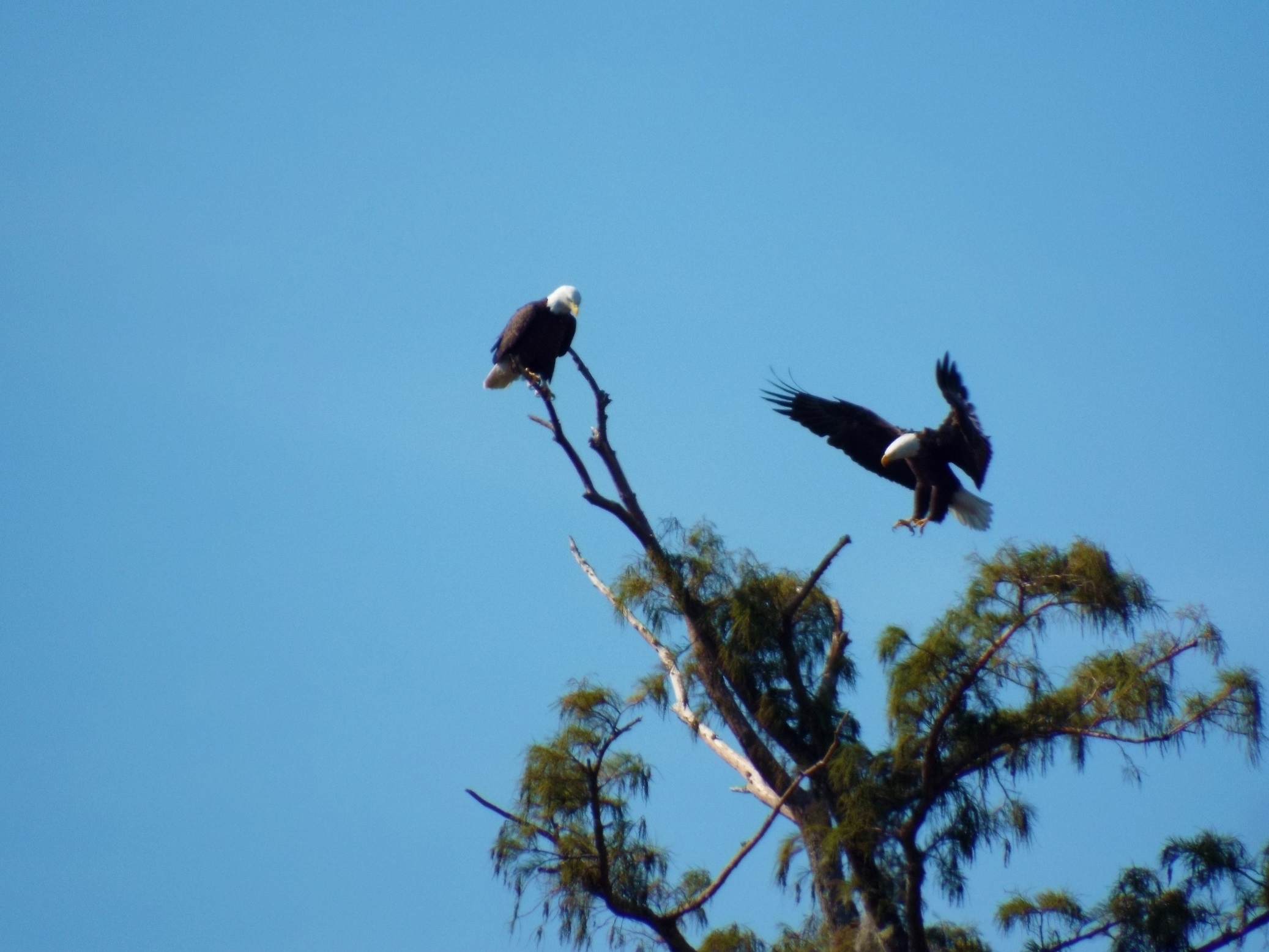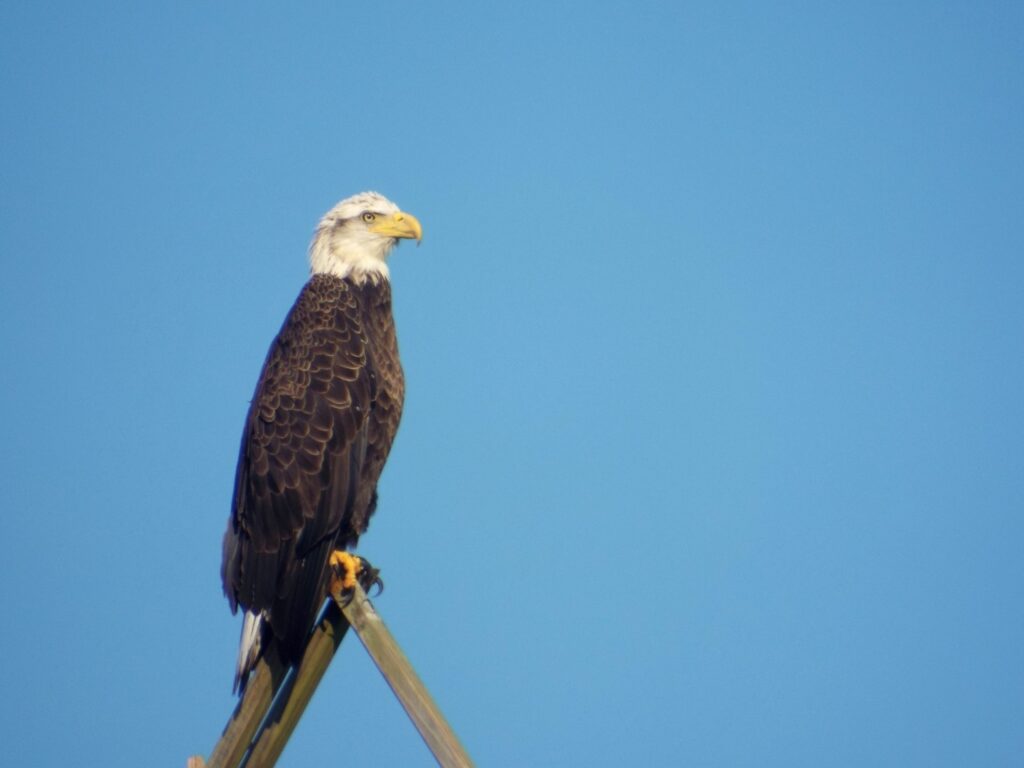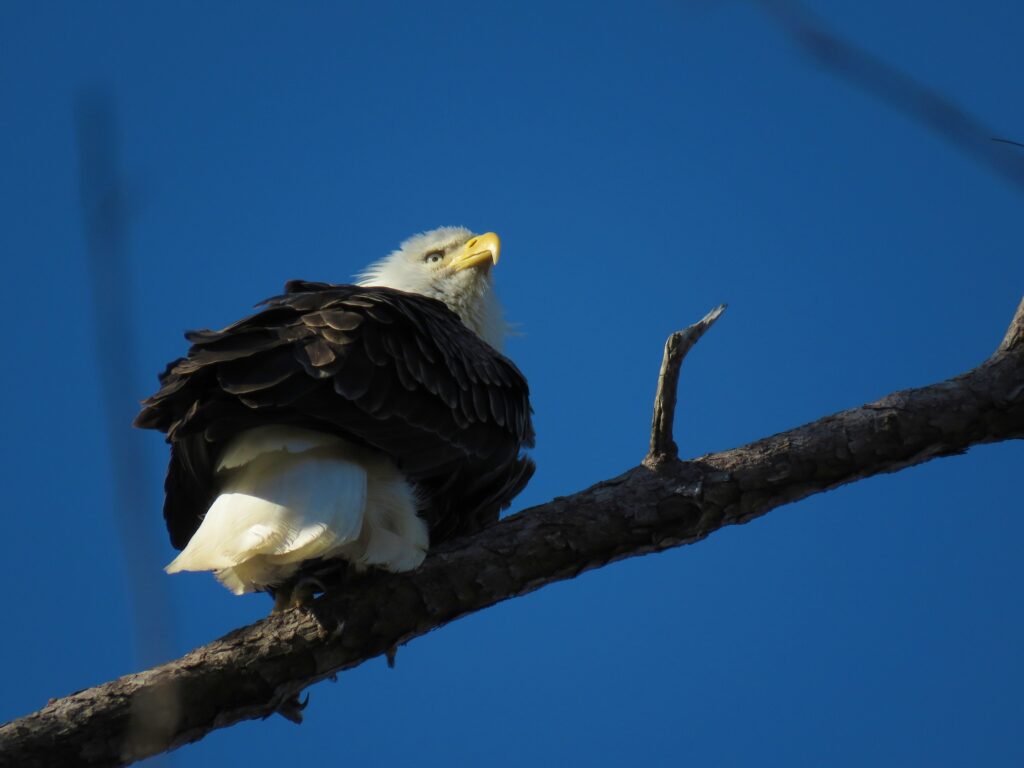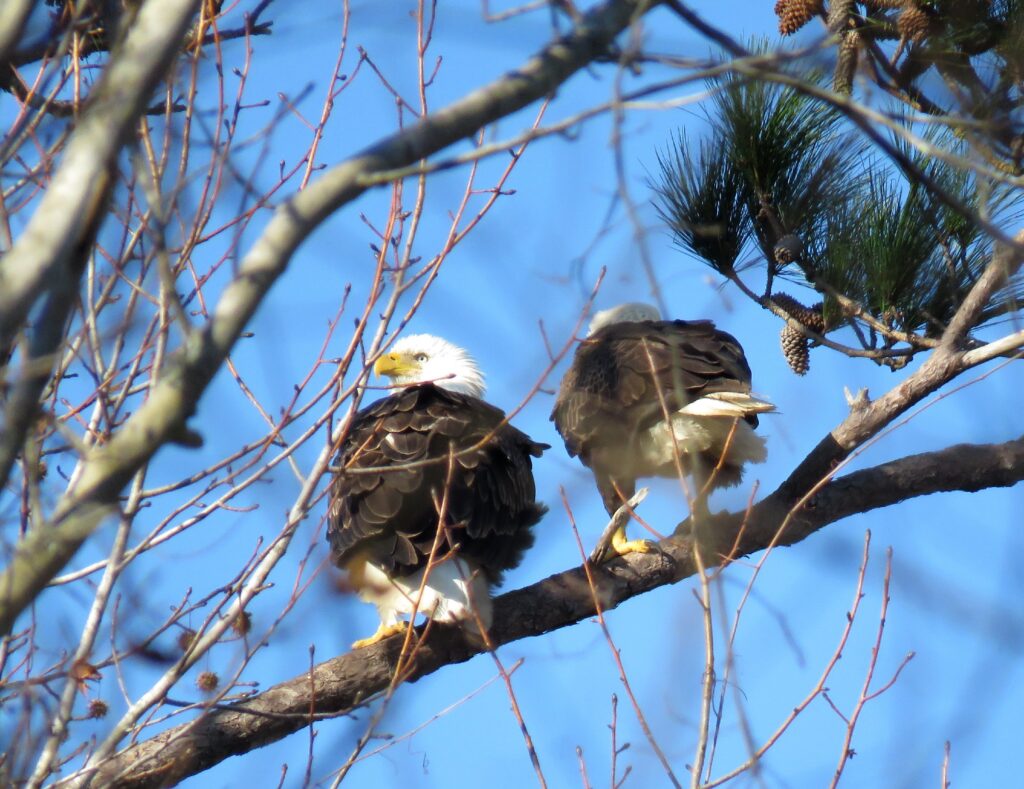



This week for Flora and Fauna Friday we have the proud symbol of freedom and American exceptionalism, the Bald Eagle (Haliaeetus leucocephalus).
The Bald Eagle is the largest raptor in South Carolina. It’s an unmistakable and profound bird to behold. Their shadowy wings, held wide and true, spread eagle across the sky eclipse the clouds. Their head crowned a snow-white summit and tail a trailing cirrus cape. Perched on golden legs anchored by toes tipped with coal-black sickles. Piercing yellow eyes, so sure and resolute, bore out abreast a stout hooked bill of similar shade. A straight posture, stiff held wings, and expressive face radiate an aura of pride and self-assured confidence.
Bald Eagles build massive nests near water in the crooks of tall, mature trees. The birds mate for life and reuse the same nest year after year, until either the tree collapses or the nest is stolen by a Great Horned Owl. These nests can exceed 10 feet in width and weigh over a ton. Bald Eagles usually hatch two chicks each year and it takes a bird 5 years to reach maturity. Bald Eagle are carnivorous but primarily piscivorous. They mostly eat fish caught from rivers or lakes but are quite fond of waterfowl, rabbits, rodents, and carrion too. They are particularly fond of American Coots (Fulica americana), a strange and social waterfowl that is most closely related to Rails. They can also commonly be spotted dining on fresh carrion with Turkey Vultures.
Bald Eagles secure their prey using their awesome eyesight, robust talons, and sheer bulk. Eagles have the best long-distance vision of any animal. They can see roughly eight times farther than a human and can discern a far wider spectrum of color than us. This allows them to identify and focus on camouflaged prey at a distance of two miles. That’s about the maximum distance an unaided human eye, in ideal conditions, could identify a human silhouette as something other than a speck. Realistically, it’d be about the distance you could identify a horse. (For visualization, two miles is the distance from the top of the McKinley Washington Jr. Bridge to Jehossee Island, which is along the South Edisto to the west. Now imagine trying to a rabbit from there!) After an Eagle hones its laser focus onto its prey, it approaches low, swings its legs forward, and simply scoops up its dinner using its momentum and curved claws like grappling hooks. Their considerable size lets them take larger prey than most raptors and allows them to bully Ospreys and Foxes into surrendering their kills. They’ve even been trained by falconers to attack and disable drones!
As you may know, Bald Eagles almost went extinct. They were one of the many victims of rampant insecticide misuse in the middle of the 20th century. Chemicals like DDT were sprayed on crops to kill agricultural pests. These pesticides were miraculously good at that job. However, the chemicals did not biodegrade and were commonly misused by farmers at extreme excesses. When it rained, DDT was washed into streams and rivers by rainwater. Here the chemical was absorbed by microscopic bacteria and plankton. These plankton were the basis of the aquatic food chain and were themselves consumed by insects and minnows. Who were eaten by small fish, that were eaten by larger fish, which were then eaten by Bald Eagles. At each step in this food chain the concentration of DDT in the animal increased exponentially. The chemical accumulated in the animals’ flesh over the course of their lifetime, until it reached lethal levels for Eagles. DDT has the interesting side effect of inhibiting the proper development of bird eggs, making the shells brittle. This leads to the eggs being crushed during incubation. Bald Eagles were large birds that were slow to mature and sat atop an aquatic food chain. Because of this, they were hit harder than any other species by the effects of DDT. Luckily, through rigorous government protection campaigns and the banning of DDT, the Eagle has made a full recovery and has been removed from the endangered species list.
Nowadays, Bald Eagles are safe from pesticide contamination but face a new more surreptitious threat in the Southeast called Avian Vacuolar Myelinopathy, or AVM. It’s a nervous system disease that affects birds. It’s caused by a toxin found in a certain species of cyanobacteria. (Cyanobacteria are an immensely diverse group. They are photosynthetic and found in every body of water.) How does this toxin get into the Eagles? It gets there from the American Coots I mentioned before. How does the toxin get into the Coots? An invasive aquatic plant called Hydrilla. The species of cyanobacteria at fault grows on the surface of the Hydrilla, whose leaf shape promotes their vigorous growth. Far more vigorous than on any native vegetation. The Coots scarf down the Hydrilla, along with the cyanobacteria, and develop AVM. This disease causes muscular discoordination, leaving the birds unable to fly or swim well. Coots congregate in large rafts that are often over 100 birds strong. They use their numbers to confuse predators. Their densely packed numbers make it hard for an Eagle to focus on one specific bird and allows the Coots to dart out of the way at the last second. When a Coot develops AVM, it can no longer keep up with the raft. The sick Coot falls behind and gets singled out by the Eagle. Since they’re so easy to catch, Bald Eagles in AVM affected areas are preferentially eating sick Coots. Just like DDT, this toxin bioaccumulates and every AVM stricken Coot the Eagle eats intensifies the symptoms, until the Eagle succumbs to the same fate. Hydrilla is a non-native plant that takes over lake systems. Its harmful effects on the environment extend far beyond just Bald Eagle deaths. SCDNR is actively and feverously working to destroy the species anywhere it occurs in the state.